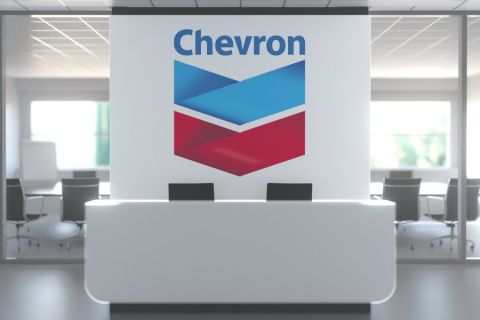Conway ethane prices took a tumble this week due to a myriad of factors working to its disadvantage, but analysts are expecting the feedstock to make a quick comeback.
Ethane’s frac spread was theoretically negative at Conway for the week ending August 12, though its margin was 2¢ per gallon (/gal) at Mont Belvieu, down from 3¢/gal the week prior. Conway was affected by a pipeline explosion near Iowa last week, which could back up the hub’s supplies, En*Vantage Inc. said in its weekly report. The Sweeny #33 ethylene plant outage and weaker gas prices were also factors, the consulting firm added. However, it expects ethane’s fortune to soon change.
“Pressure is building for ethane prices to snap back byat least 2¢/gal,” En*Vantage writes in its August 15 report. “Ethane’s equivalent cracking value to propane is at 48.9¢/gal this week compared to 44.4¢/gal last week and ethylene producers have the even more economic incentive to maximize ethane cracking, which should help lower ethane inventories over the next few months. As of [August 14], ethane is generating a net margin of 43.7¢ per pound (/lb) compared to 32.9¢/lb for propane. N-butane is generating a margin of 25.9¢/lb.”
There are also indications that ethane rejection could be moderating, En*Vantage says. Right now, it estimates ethane rejection to be about 210 million barrels per day (bbl./day), excluding the Marcellus. En*Vantage had in recent reports estimated ethane rejection to be about 240 million bbl./day. Its most recent approximation comes as propane frac spreads, causing some large integrated processors to reject less ethane in order to minimize possible propane loss.
En*Vantage adds that its balances continue to indicate ethane inventories will likely decrease for the next six months. They’ll reach 25 million bbl./day by November if unscheduled outages don’t exceed 2% of U.S. ethylene capacity through November, En*Vantage says.
“Normally when ethane inventories drop below 25 million bbl., ethane frac spreads have shown significant improvement. However, any significant improvement in ethane frac spreads would immediately bring on more ethane supplies to the market as ethane rejection stops. Consequently, it is questionable that a rally in ethane frac spreads can be sustained.”
According to U.S. Energy Information Administration (EIA) estimates, working gas in storage was 2,941 billion cubic feet (Bcf) as of August 2. While this represented a 96 Bcf net increase from the week prior, stocks were about 297 Bcf less year-over-year, the EIA added. Overall, storage was 20 Bcf above the five-year average of 2,921 Bcf. The National Weather Service (NWS) is forecasting warmer than normal temperatures along most of Central U.S. and the West Coast, as well as in Florida and parts of the North West.
Though those regions will be feeling the heat in coming days, much of the country has experienced an unseasonably mild summer. The weather might aid in correcting the balance with the season’s increase in injection rates, and analysts say recovery might be in sight, according to the EIA.
The EIA reports that starting April natural gas working inventories at 31% below last year’s record of 2.477 trillion cubic feet (Tcf) has resulted in more open storage capacity for injections to occur.
In addition, a recent commodities report by Barclays suggests that inventories would only need to grow slightly more than 900 Bcf by the end of October to end the injection season with the expected 3.8 to 3.9 trillion cubic feet (Tcf) of storage—about 3.3% below the October 2012 level, but 1.1% above the five-year average. Inventories would need only to fill about 240 Bcf more than last year’s 688 Bcf, an average of 17 Bcf more per week, in order to meet the mark.
This should be an easy target.
“The unseasonably mild weather could certainly push storage levels beyond the forecasted 3.9 Tcf,” the commodities report said, and the EIA’s August Short-Term Energy Outlook reports the same.
The most profitable NGL to make at both hubs remained C5+ at $1.74/gal at Conway and $1.76/gal. at Mont Belvieu. This was followed, in order, by isobutene at $1.09/gal at Conway and $1 at Mont Belvieu; butane at 96¢/gal at Conway and 92¢/gal at Mont Belvieu; propane at 69¢/gal. at Conway and 71¢/gal. at Mont Belvieu; and ethane theoretically negative at Conway and 2¢/gal at Mont Belvieu. The theoretical NGL barrel price rose 0.63% at Mont Belvieu to $40.38/bbl. with a 0.77% improvement in margin to $28.29/bbl. At Conway, the theoretical NGL barrel price rose 2% to $39.86 with a 2.9% gain in margin to $28.03/bbl.
Recommended Reading
As Rig Count Slips, Oil Production Keeps Growing
2024-10-22 - Despite the offshore rig market showing signs of demand slippage, oil production looks to be on the rise for the foreseeable future, Westwood analysts say.
APA, TotalEnergies Aim for 'New Dawn' in Suriname with Massive GranMorgu Project
2024-10-01 - APA Corp. and TotalEnergies announced a $10.5 billion final investment decision for the GranMorgu project located offshore Suriname in Block 58. First production to come from a 220,000 bbl/d FPSO is slated to flow in 2028.
E&P Highlights: Nov. 25, 2024
2024-11-25 - Here’s a roundup of the latest E&P headlines, including North Sea production updates as well as major offshore contracts and a transfer of interests by Exxon in Suriname.
Chevron Pushing Longer Laterals in Argentina’s Vaca Muerta Shale
2024-09-13 - Chevron Corp., already drilling nearly 2.8-mile laterals at its Loma Campana Field in Argentina, wants to drill even longer horizontals, an executive told Hart Energy.
E&P Highlights: Nov. 4, 2024
2024-11-05 - Here’s a roundup of the latest E&P headlines, including a major development in Brazil coming online and a large contract in Saudi Arabia.
Comments
Add new comment
This conversation is moderated according to Hart Energy community rules. Please read the rules before joining the discussion. If you’re experiencing any technical problems, please contact our customer care team.





